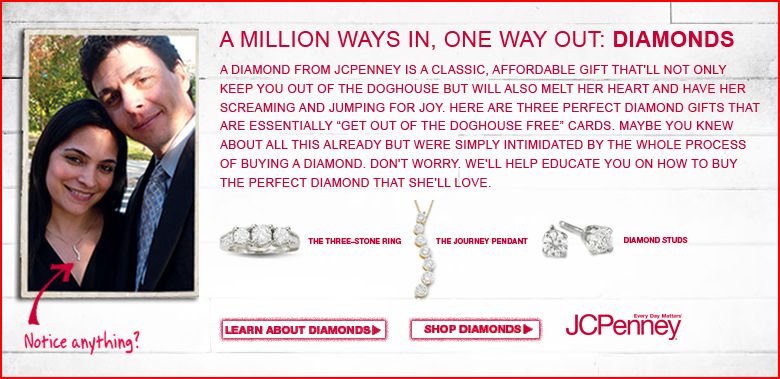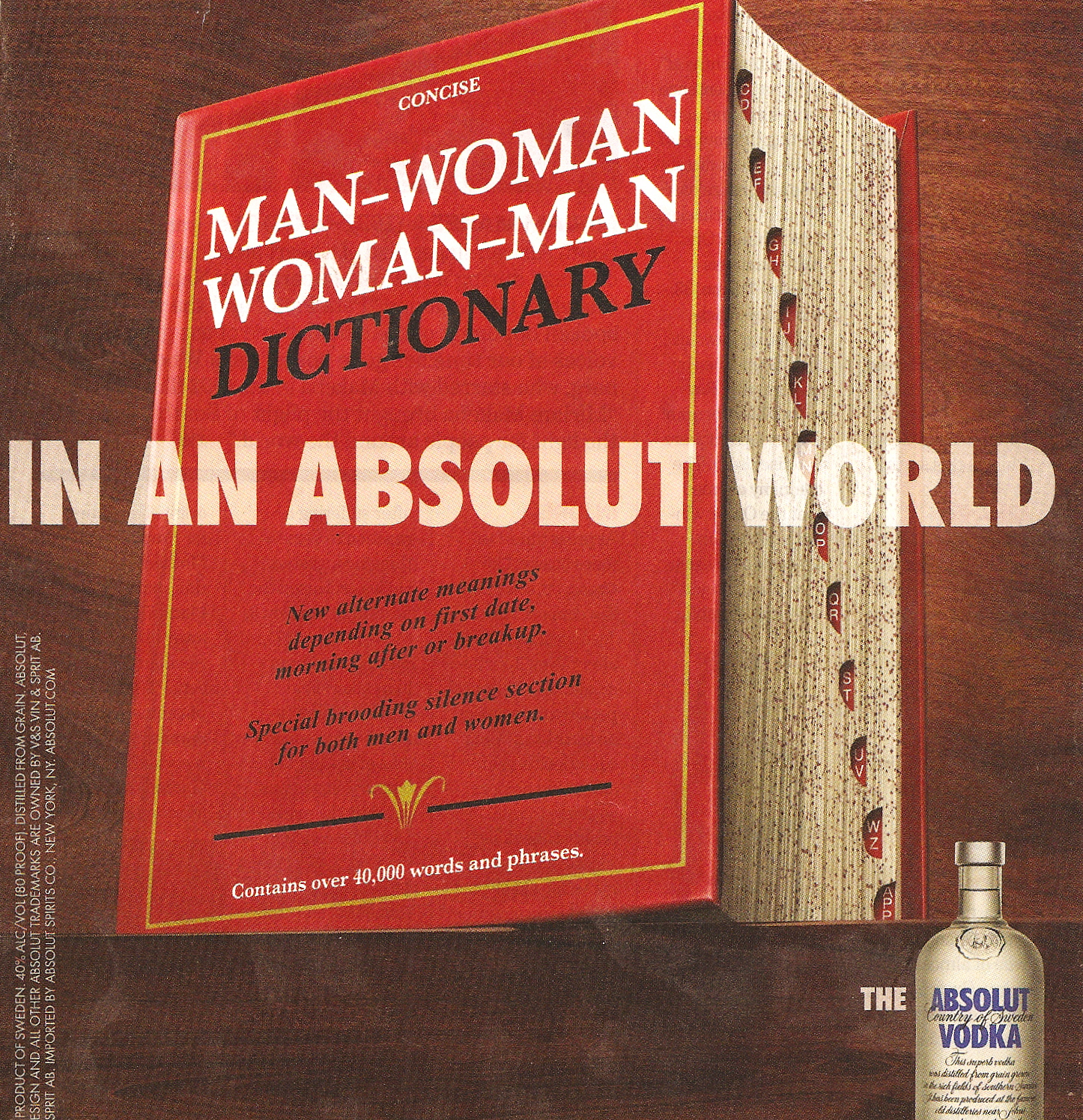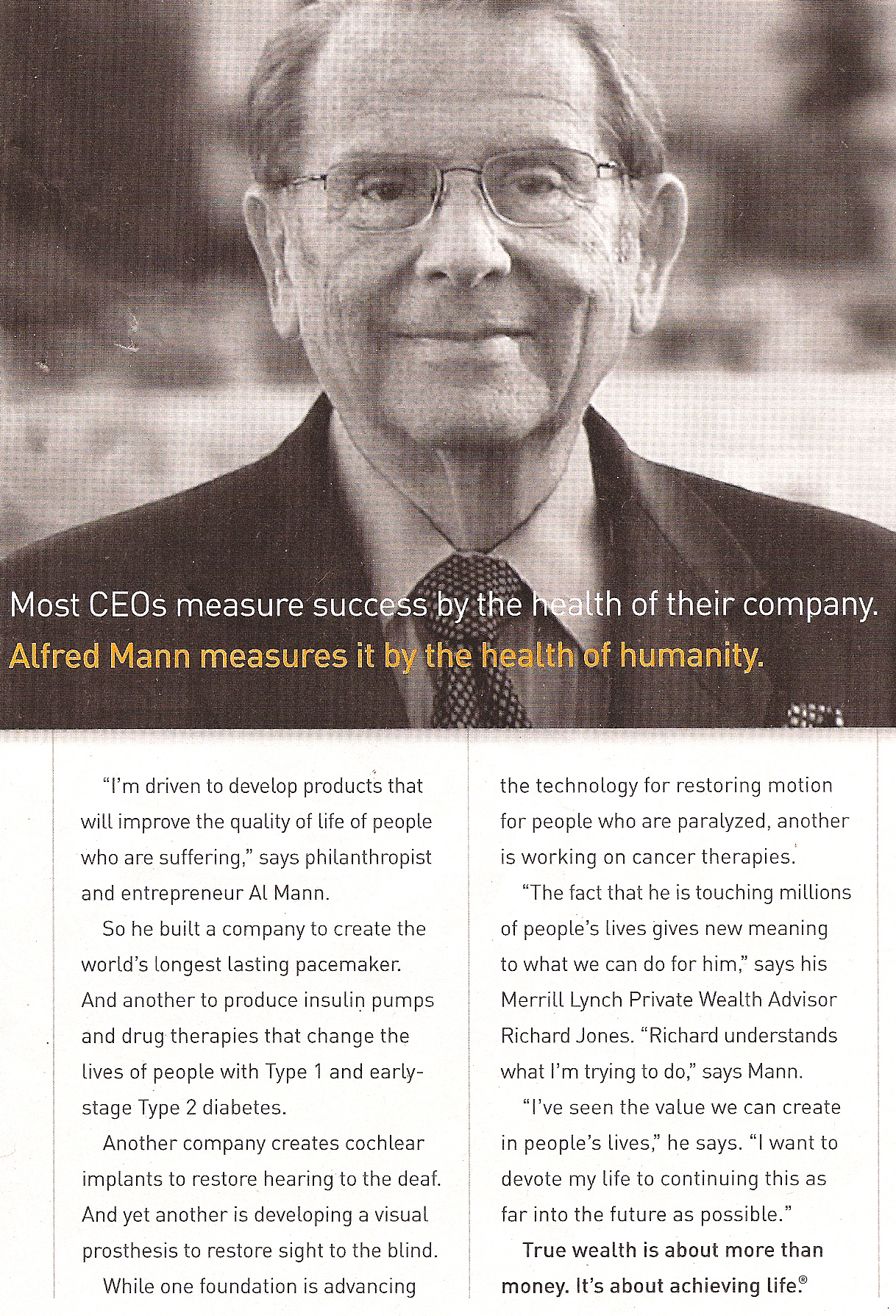Bern K. and Megan P. sent us another example of androcentrism (see here, here, here, and here), one that is nicely combined with the representation of women as annoying naggers, and the social construction of diamonds as men’s best friend. Bern writes:
It starts off with promise, showing that it’s ridiculous for a man to buy his wife a vacuum cleaner for their anniversary. It finishes, unfortunately, by suggesting that the only way to get out of the doghouse is to buy his wife diamonds.
In the 5-minute commercial, men are punished by their wives for being insensitive or insulting by being sent to the “doghouse.” In this five minute advertisement for JC Penney, men who have been sent to the doghouse are punished by being forced to do feminine tasks: fold laundry, eat quiche, and drink chai lattes. There is some irony in that the main dude was sent to the doghouse for buying his wife a vacuum for their anniversary. Apparently he wouldn’t want to be caught dead vacuuming… which is exactly why the gift might be considered insulting. After all, when you give a woman a cleaning product for a gift, it means you think it’s HER JOB.
The video:
The website include the sound of a woman nagging and giving inconsistent orders (“speak less,” “talk more”).
How to get out of the doghouse? Buy your wife diamonds (at JC Penney):

I like how it says that she’ll be “screaming and jumping for joy.” Gah, women are so shallow and annoying.
There’s more! The website is interactive. You can actually put people in the doghouse. If you are on Facebook, you can upload someone’s profile picture and have it show up on the website. A fascinating new way to merge advertising and social networking sites.
NEW (Jan. ’10)! JC Penney apparently thought this campaign was so delightful that they updated it. Joel P. sent us the link. It’s really quite obnoxious (for all the reasons discussed above):
[youtube]https://www.youtube.com/watch?v=_U45oxUyiMc[/youtube]
Jezebel also has a nice analysis.
Lisa Wade, PhD is an Associate Professor at Tulane University. She is the author of American Hookup, a book about college sexual culture; a textbook about gender; and a forthcoming introductory text: Terrible Magnificent Sociology. You can follow her on Twitter and Instagram.










